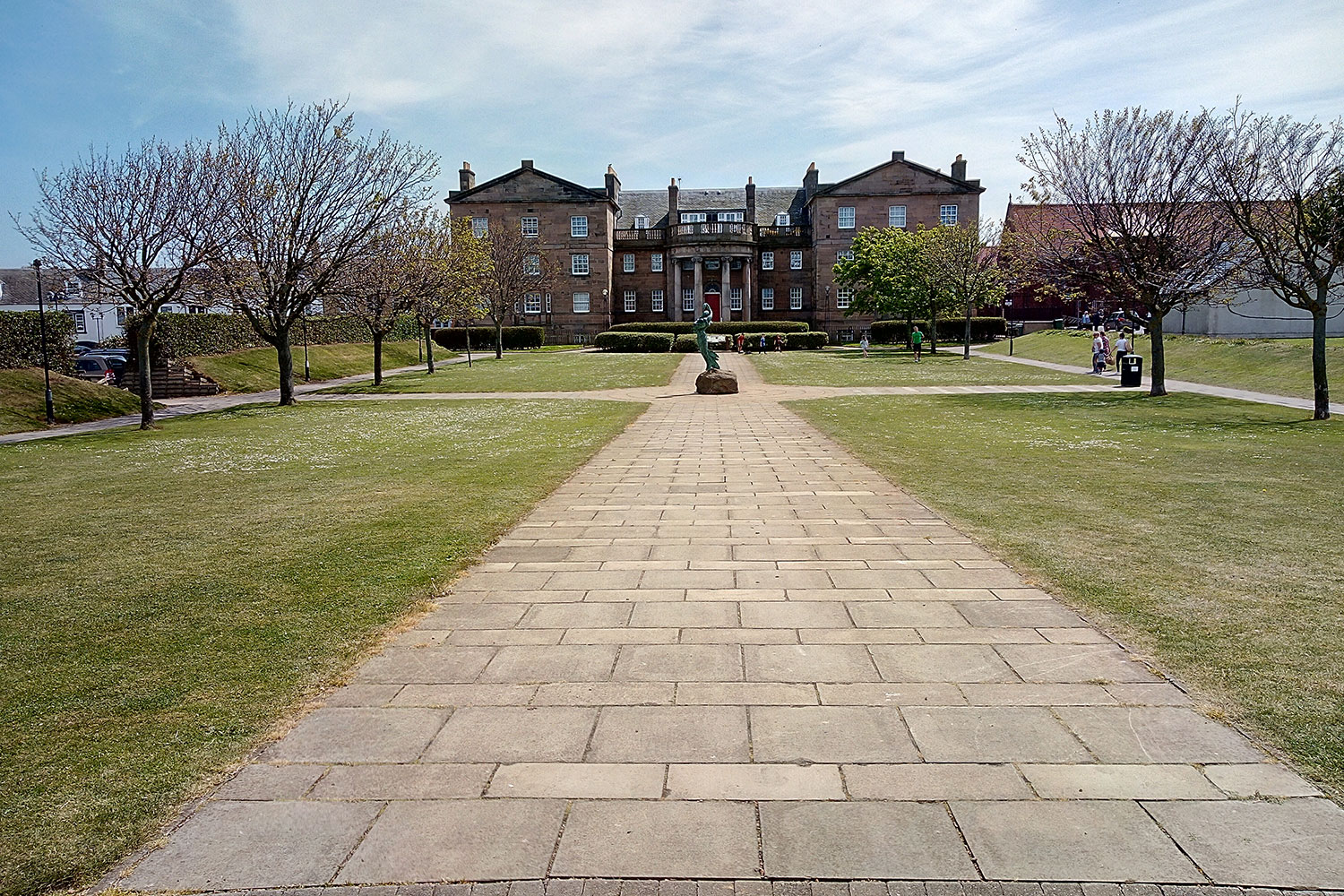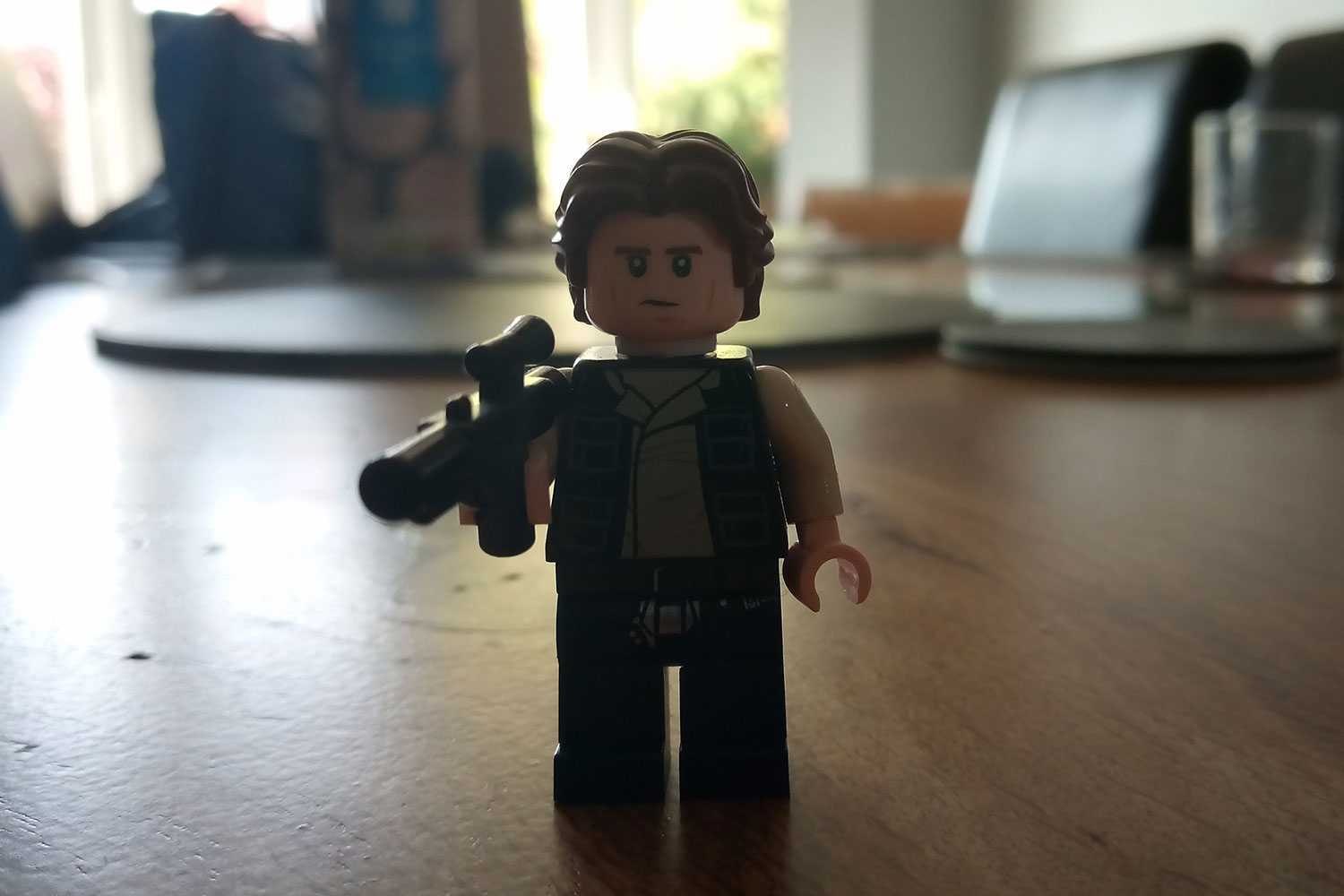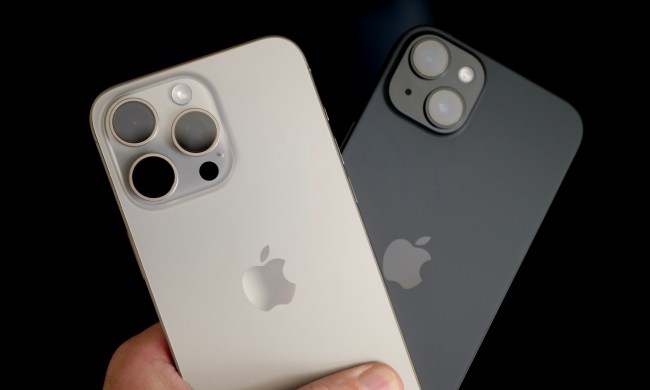“The Alcatel 3V has features found in more expensive phones, but this is a cheap phone that feels, well, cheap.”
- Attractive design
- Low price
- Decent display
- Poor performance
- Slow camera
- Slow charging
- Too little storage
You could argue that innovation at the top end of the smartphone market has slowed in recent years, with annual flagship updates offering incremental improvements. Manufacturers strike on a successful design and take small steps each year to improve it. If you want to see giant leaps nowadays you have to look at the budget end of the market where phone design trends and new features are filtering down a lot faster than ever before.
With phones like the Nokia 6.1 and HTC U11 Life, Motorola’s latest is no longer the default budget champion, although we do like the Moto G6 and Moto G6 Plus. But these phones are all $250 or above. Even the Honor 7X costs $200. The phone we’re about to review is a full $50 less than that. The Alcatel 3V sounds like a real bargain, on paper at least. In the week we’ve been using it, we’ve found its poor performance may not even be worth the low price tag.
A budget beauty that doesn’t stand out
We’ve used a few Alcatel phones in the past and found them to be quirky in the design department, but the Alcatel 3V is a phone that can blend into the crowd — and that’s a good thing.
Alcatel has clearly paid attention to design trends, so the 3V has an attractive, shiny mirror finish on the plastic back. Our review unit is a dark blue, but you can also get this phone in black or gold.
There’s a dual camera module with a round fingerprint sensor below it, both with metallic silver accents around them. The frame is matte aluminum. The fingerprint sensor worked well for us, generally unlocking the phone on the first try.
The front is dominated by a large 6-inch display. The bezels are a little bigger than you might like, but surprisingly, this phone has a better screen-to-body ratio than the Moto G6, Google Pixel 2, or the iPhone 8.
The 6-inch LCD display has the modern 18:9 aspect ratio and boasts a resolution of 2,160 x 1,080 pixels which puts it on a par with the Moto G6 Plus. While it’s certainly not the most vibrant display we’ve ever used, we found it sharp and comfortable to read on for long periods of time.
The Alcatel 3V sounds like a real bargain, on paper at least.
You’ll find a textured power button on the right-hand side with the SIM tray above it, which also has room for a MicroSD card. There’s a 3.5mm headphone jack up top, a volume rocker on the left, and a MicroUSB port for charging on the bottom, flanked by the speaker.
We’d be happy to see MicroUSB retired in favor of the superior, reversible USB Type-C charging port, but you have to expect some compromises in a phone this price.
It’s quite a big phone, similar in size to the Moto G6 Plus, but a lot lighter because of the plastic back. It attracts finger smudges, but what phone doesn’t nowadays?
We imagine it will handle falls and bumps better than a glass phone, but there’s no IP rating so you’ll want to keep it away from water. Overall, the Alcatel 3V is a good-looking phone that looks considerably more expensive than its actual price tag.
Performance is incredibly slow
We knew there would be a big compromise somewhere, and as soon as we turned the Alcatel 3V on, it became glaringly apparent. We didn’t even make it beyond the agonizingly slow set up before the weather app crashed and threw up an error.

The Alcatel 3V is packing a Mediatek MT8735A processor with just 2GB of RAM. Even switching from the budget Moto G6 Plus, using the Alcatel 3V feels like wading through molasses. There’s at least a second-long pause after every tap. Sometimes an app will take so long to load you’ll think the tap didn’t register.
It’s a bit like going back in time to the bad old days of Android lag. You get used to it quickly and start to allow that beat for your action to kick in, but it never stops being frustrating.
We played PUBG: Mobile on the lowest settings and found that, despite some dropped frames, it was playable (we even got a chicken dinner!). We also played a bit of Fallout Shelter and Super Mario Run without any problems. Just be prepared for long loading times and dropped frames on fast-paced, graphically-intensive titles.
The benchmark results say everything there is to say about the performance of the Alcatel 3V:
- AnTuTu 3D Bench: 41,440
- 3DMark Sling Shot Extreme: 159 OpenGL
- Geekbench 4: 643 single-core; 1,826 multi-core
Those results make it the slowest phone we’ve tested for a long time. To give you a few comparison points, the Moto G6 scored 70,827 on AnTuTu, the Nokia 6.1 scored 88,595, the Honor 7X scored 63,311, and even the last Alcatel phone we reviewed, the Alcatel Idol 5, scored 62,869.
Benchmarks aren’t always the best guide, but in this case, real-world performance is every bit as bad as the benchmarks suggest. It takes a long time to switch between apps and everything from the Chrome browser to the messaging app takes a few seconds to load.
Using the Alcatel 3V feels like wading through molasses.
The Alcatel 3V is running Android 8.0 Oreo, but we really wish the manufacturer had resisted the urge to add its own Joy user interface on top. It didn’t bring us any joy. It’s a bit garish and childish looking. There are a couple of apps you probably won’t use, but thankfully it’s not packed with bloatware. We have no doubt that this phone would run better with stock Android.
Alcatel has included a Face Unlock option, but we found it to be a little flaky in practice. When it worked it was fast, but it didn’t always work, and it wasn’t obvious why.
Storage is another issue. There’s only 16GB of storage out of the box and we hit 12.47GB within three days. It’s not enough. There is a MicroSD card slot, but we have concerns that putting a lot of data on a card will slow performance down even further.
You do get a set of basic earphones in the box with the Alcatel 3V and there’s an FM radio app you can use when you plug them in, so that’s a bonus.
A dual-lens camera at this price?
We were very surprised to find a dual-lens camera in the Alcatel 3V. They are creeping into budget devices like the Moto G6, but most budget devices stick to a single lens.
There’s a 12-megapixel lens with an f/2.2 aperture and a 2-megapixel lens with an f/2.4 aperture. Like everything else about this phone, the camera is slow. It takes an age to load up, but worse, it’s extremely slow to snap a shot. It’s not impossible to get decent photos in good lighting conditions, but you’re going to need to hold the phone very still.
A lot of our shots were muddy and blurred. Because of the slow shutter speed and the lack of any stabilization, any movement is liable to cause blurring, and anything that’s moving in the shot will look smudged – even slowly strolling people as you can see in the harbor shot.
It also doesn’t cope at all well with close-up photography. We took a few close-up shots and they generally turned out terrible, even after telling the camera where to focus.
Low-light and night-time shots tend to be noisy and far too dark. The small apertures here don’t let in a lot of light, so you really need decent lighting to get anything approaching a decent photo. There’s a night mode that employs the flash and tries to let in more light, but it’s incredibly slow to snap a shot.
There’s also a portrait mode designed to take advantage of the dual-lens camera to capture shots with that coveted bokeh effect, where the subject is in sharp relief and the background is blurred.
We shot a few different portraits and found that it worked best if you got really close to the subject. When it can easily determine what’s in the foreground and the background, it does a decent job. When the subject is further away as in the last shot, it has no clue what to blur and makes a ton of mistakes.
In the right conditions, if you take your time, you can get some nice photos.
Sometimes a slider pops up to enable you to adjust the effect, but we didn’t find it worked very well. Part of the problem is that it’s so slow to show any on-screen adjustment. We generally preferred the results photographing people with the automatic settings.
You can also record video on the Alcatel 3V up to 1080p at 30 frames per second. The front-facing 5-megapixel camera is a basic shooter for selfies.
Overall the camera is quite poor, but budget phones tend to have poor cameras. Snapping a range of shots, it disappointed often, but it still surprised us on occasion with a half-decent photo so it’s not a total dud. In the right conditions, if you take your time, you can get some nice photos.
We’d rather Alcatel nail the basics, though, rather than spending time adding extra features that end up not working very well.
Battery life
There’s a 3,000mAh battery in the Alcatel 3V and that’s enough for a typical day. We generally had a little left in the tank at bedtime, but you’ll want to plan to charge it up every night.
How quickly the battery fades all depends on what you do with it, of course. Playing PUBG: Mobile online ate through the battery quickly, as did a lot of camera use, but if you mostly use your phone for web browsing and messaging, then it might just stretch to two days between a charge.
There’s no wireless charging on offer, which is fine in a phone this price, but we are bit disappointed to find a complete lack of any kind of fast charging. You’re going to need to plug the Alcatel 3V in for more than two hours for a full charge.
Phones generally charge fast and then slow down as they fill, but just to give you an idea — we plugged the Alcatel 3V in to the wall outlet with the charger and cable that came in the box, and it took half an hour to go from 55 percent up to 70 percent. You’re going to want to get into the habit of plugging it in overnight.
Price, availability, warranty information
The Alcatel 3V costs $150 unlocked in the U.S., and it will work on AT&T or T-Mobile, but not Verizon or Sprint. You can buy one from Amazon, Best Buy, or Walmart.
It’s an even better deal in the U.K. where you can snap it up on pay-as-you-go at Tesco for just 95 British pounds.
Alcatel offers a standard one-year warranty for faults.
Our Take
If Alcatel had picked a slightly faster processor and squeezed in an extra 1GB of RAM, we would be recommending the 3V almost unreservedly as an amazing bargain. At $150 we can live with some of the other limitations because there’s a lot to like here, but it’s just so slow.
Is there a better alternative?
Throughout this review we’ve talked about alternative budget phones, particularly the Moto G6 Plus, which we just reviewed. While it is a better phone in almost every respect, we also must remember that it costs double the price of the Alcatel 3V — and it’s not available in the U.S.
Perhaps our favorite budget release right now is the Nokia 6.1, an Android One phone that offers a great user experience. But it still costs $270. The gap between the Alcatel 3V and the Moto G6, which is actually available in the states, isn’t as wide, but if you opt for it you’ll still have to find an extra $100. There’s the Moto G6 Play as well, which only costs $50 more, but we haven’t reached a verdict on it yet.
If the Nokia 6.1 is out of your budget, you should take a look at the impressive Honor 7X, which costs $200. You might want to also look at the Moto E5 Plus or E5 Play, but the Alcatel 3V does have some things they lack, and we haven’t reviewed those phones just yet.
How long will it last?
Alcatel’s record with software updates is questionable, so we have no idea if the 3V will ever get Android P or anything beyond that, but we’re doubtful. Because the performance is already limited, we also have concerns about how slow this phone will get as it fills and ages. We think you’ll be ready for a change well before two years is up.
Should you buy it?
No. At $150, the Alcatel 3V gives you a lot of phone — but if the user experience is frustratingly slow, what’s the point? We think saving up a little more cash to go for a Moto G6 or Nokia 6.1 will really serve you better.























